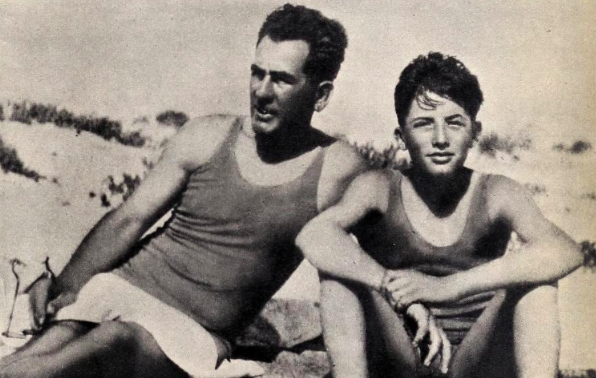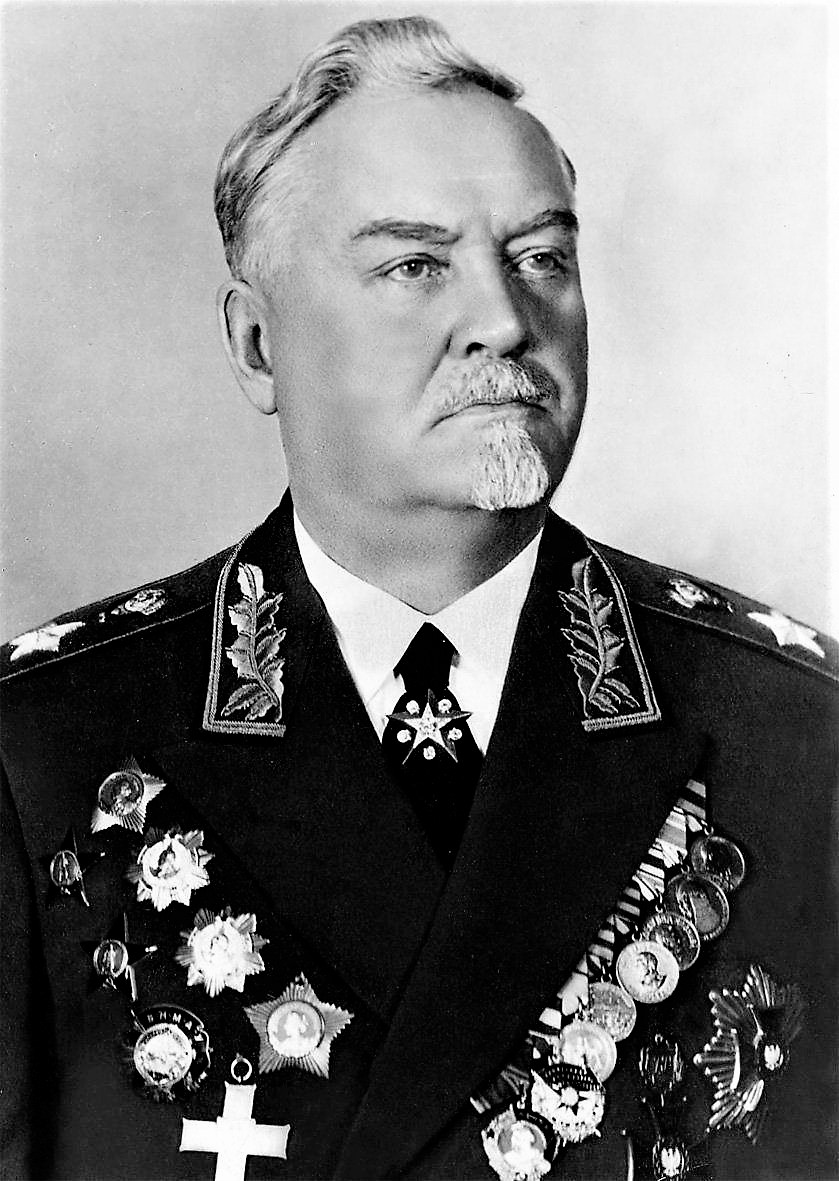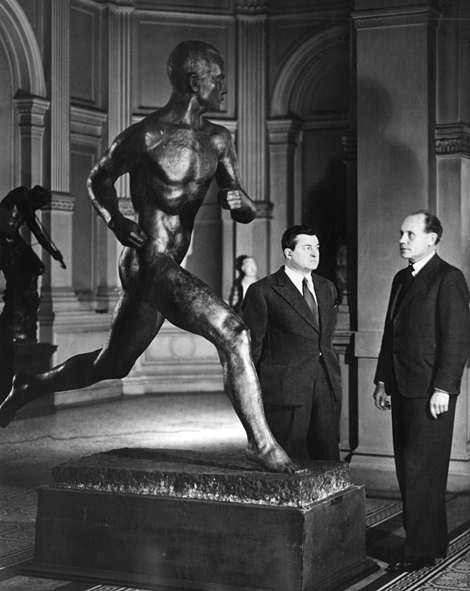|
Räshid Nasretdin
Räshid Nasretdin ( Tatar: Рәшит Насретдин, ''Räşit/Rəşit Nasretdin''; 14 July 1920 – 28 August 2010) was a Finnish photographer of Tatar descent, who operated his own shop in Helsinki for decades with his wife. Among the people he captured include notable politicians and artists. Nasretdin moved to Finland from Russia as a child. Biography Räshid Nasretdin was born as the son of Fähretdin Nasretdinoff in a Nizhny Novgorod Governorate village named Aktuk. He came to Finland when he was two and at first lived in Lappeenranta and after that in Helsinki. He studied to become a housebuilder but through his classmate he eventually became interested in photography. In 1945, Nasretdin married. With his wife Habibä he operated a photography shop in Helsinki for over forty years. Their other son, Samil, has continued with the shop since, located in Fredrikinkatu. Nasretdin's work was vesatile. He photographed sports events, daily life and notable figures, ... [...More Info...] [...Related Items...] OR: [Wikipedia] [Google] [Baidu] |
Aktuk
Aktuk (Russian language, Russian: Актуково, aka Yañapar) is a Mishar Tatars, Mishar Tatar village in Krasnooktyabrsky District, Nizhny Novgorod Oblast, Krasnooktyabrsky District, Nizhny Novgorod Oblast. Most ancestors of Finnish Tatars were from Aktuk or neighboring villages.Сенюткин С. Б. Актуково (Новая Пара, Янотарь) // История исламских общин Нижегородской области. — Н. Новгород: Изд-во Нижегородского гос. университета, 1998. — С. 51−59. History The village is believed to be founded in 1600s when a man named Aktuk and four of his brothers, Uraz, Antar, Kızım and Kadım moved to the area. They settled near each other and formed villages and named them after themselves. The names are close to original to this day; Aktuk/Yañapar, Urazawıl, Atarawıl, Kızımawıl ja Kadımawıl. Some sources claim that only Aktuk, Uraz and Antar were brothers and ... [...More Info...] [...Related Items...] OR: [Wikipedia] [Google] [Baidu] |
Alvar Aalto
Hugo Alvar Henrik Aalto (; 3 February 1898 – 11 May 1976) was a Finnish architect and designer. His work includes architecture, furniture, textiles and glassware, as well as sculptures and paintings. He never regarded himself as an artist, seeing painting and sculpture as "branches of the tree whose trunk is architecture." Aalto's early career ran in parallel with the rapid economic growth and industrialization of Finland during the first half of the 20th century. Many of his clients were industrialists, among them the Ahlström-Gullichsen family, who became his patrons. The span of his career, from the 1920s to the 1970s, is reflected in the styles of his work, ranging from Nordic Classicism of the early work, to a rational International Style (architecture), International Style Modernism during the 1930s to a more organic modernist style from the 1940s onwards. His architectural work, throughout his entire career, is characterized by a concern for design as Gesamtkunstwerk— ... [...More Info...] [...Related Items...] OR: [Wikipedia] [Google] [Baidu] |
Myllypuro
Myllypuro ( Finnish), Kvarnbäcken ( Swedish) is an East Helsinki's neighborhood of Helsinki, Finland Finland ( fi, Suomi ; sv, Finland ), officially the Republic of Finland (; ), is a Nordic country in Northern Europe. It shares land borders with Sweden to the northwest, Norway to the north, and Russia to the east, with the Gulf of Bot .... {{Helsinki Neighbourhoods of Helsinki ... [...More Info...] [...Related Items...] OR: [Wikipedia] [Google] [Baidu] |
Röstäm Yaxin
Röstəm Möxəmmətxaci ulı Yaxin ( tt-Cyrl, Рөстәм Мөхәммәтхаҗи улы Яхин , russian: Рустем Мухаметхазеевич Яхин, Rustem Mukhametkhazeyevich Yakhin; 16 August 1921 – 23 November 1993) was a Tatar composer and pianist, People's Artist of the USSR (1986). Author of more than 300 songs and romances, including the State Anthem of the Republic of Tatarstan. Röstəm Yaxin was a laureate of the Ğabdulla Tuqay Tatar ASSR State Prize in 1959. Notable works * ''Məxəbbət cırı'' (Мәхәббәт җыры / Песнь любви, ''Pesn lyubvi'') * ''Işanam'' (Ышанам / Верю, ''Veryu'') * ''Bezneñ'' ''ənilər'' (Безнең әниләр / Наши матери, ''Nashi materi'') * ''Aq cilkən'' (Ак җилкән / Белый парус, ''Belyi narus'') * ''Dulqınnar'' (Дулкыннар / Волны, ''Volny'') * ''Kitmə, Sanduğaç'' (Китмә, сандугач / Не улетай, соловей, '' ... [...More Info...] [...Related Items...] OR: [Wikipedia] [Google] [Baidu] |
Gregory Peck
Eldred Gregory Peck (April 5, 1916 – June 12, 2003) was an American actor and one of the most popular film stars from the 1940s to the 1970s. In 1999, the American Film Institute named Peck the 12th-greatest male star of Classic Hollywood Cinema. After studying at the Neighborhood Playhouse with Sanford Meisner, Peck began appearing in stage productions, acting in over 50 plays and three Broadway productions. He first gained critical success in ''The Keys of the Kingdom'' (1944), a John M. Stahl–directed drama which earned him his first Academy Award nomination. He starred in a series of successful films, including romantic-drama ''The Valley of Decision'' (1944), Alfred Hitchcock's '' Spellbound'' (1945), and family film ''The Yearling'' (1946). He encountered lukewarm commercial reviews at the end of the 1940s, his performances including ''The Paradine Case'' (1947) and ''The Great Sinner'' (1948). Peck reached global recognition in the 1950s and 1960s, appearing back ... [...More Info...] [...Related Items...] OR: [Wikipedia] [Google] [Baidu] |
Nikolai Bulganin
Nikolai Alexandrovich Bulganin (russian: Никола́й Алекса́ндрович Булга́нин; – 24 February 1975) was a Soviet politician who served as Minister of Defense (1953–1955) and Premier of the Soviet Union (1955–1958) under Nikita Khrushchev, following service in the Red Army and as defence minister under Joseph Stalin. Early life and career Bulganin was born in 1895 in Nizhny Novgorod. The son of an office worker, he was of Russian ethnicity. He joined the Bolshevik Party in March 1917 and was recruited in 1918 into the Cheka, the Bolshevik regime's political police, where he served until 1922. During the summer of 1918, he worked with Lazar Kaganovich, the local communist leader, in imposing the Red Terror in Nizhny Novgorod. He worked with Kaganovich again in Turkestan in 1920. After the Russian Civil War (1917-1923), Bulganin became an industrial manager and worked in the electricity administration until 1927. He was the director of the Mosco ... [...More Info...] [...Related Items...] OR: [Wikipedia] [Google] [Baidu] |
Princess Sibylla Of Saxe-Coburg And Gotha
Princess Sibylla of Saxe-Coburg and Gotha (Sibylla Calma Marie Alice Bathildis Feodora; 18 January 1908 – 28 November 1972) was a member of the Swedish royal family and the mother of the current king of Sweden, Carl XVI Gustaf. Born into the House of Saxe-Coburg and Gotha, Sibylla was the daughter of Charles Edward, the last duke of Saxe-Coburg and Gotha. She became a Swedish princess when she married Prince Gustaf Adolf, Duke of Västerbotten in 1932. She thus had the prospect of one day becoming queen, but the prince was killed in an airplane crash in 1947 and did not live to ascend the Swedish throne. Her son became king the year after her death. Early life Princess Sibylla (then Sibylle) was born on 18 January 1908 at Schloss Friedenstein in the city of Gotha, one of the two capitals in the Duchy of Saxe-Coburg and Gotha in central Germany. She was the elder daughter and second child of Charles Edward, Duke of Saxe-Coburg and Gotha, and Princess Victoria Adelaide of Schl ... [...More Info...] [...Related Items...] OR: [Wikipedia] [Google] [Baidu] |
Prince Tsuneyoshi Takeda
was the second and last heir of the Takeda-no-miya collateral branch of the Japanese Imperial Family. Biography Early life Prince Takeda Tsuneyoshi was the only son of Prince Takeda Tsunehisa and Masako, Princess Tsune (1888–1940), the sixth daughter of Emperor Meiji. He was, therefore, a first cousin of Emperor Shōwa. Prince Tsuneyoshi became the second head of the Takeda-no-miya house on 23 April 1919. After being educated at the Gakushūin Peers' School, and serving for a session in the House of Peers, he graduated from the 32nd class of the Imperial Japanese Army Academy in July 1930, and received a commission as a sub-lieutenant in the cavalry. Marriage and family On 12 May 1934, Prince Takeda married Sanjo Mitsuko.''Nihon Gaiji Kyōkai.'' (1943). ''The Japan Year book'', p. 5. She was the youngest daughter of Prince Sanjo Kimiteru, with whom he had five children (3 sons and 2 daughters): # , born on # , (b. 1942) # , (b. 1943) # (b. 1944) Japanese ambassado ... [...More Info...] [...Related Items...] OR: [Wikipedia] [Google] [Baidu] |
Tauno Palo
Tauno Valdemar Palo (born Tauno Brännäs; 25 October 1908 – 24 May 1982) was a Finnish actor and singer in what some consider the golden age of Finnish cinema. In ''Guide to the Cinema of Sweden and Finland'' Peter von Bagh names Palo as the most renowned, the best-loved, and quite indisputably the greatest and the best actor of Finnish cinema. His skill to combine lightweight and youthful charm with heavyweight acting was seen most clearly in the theatre. His most famous roles were perhaps in ''Kulkurin valssi'' ("The Vagabond's Waltz"), and ''Vaimoke'' ("Surrogate Wife"). He appeared with actress/singer Birgit Kronström in the 1941 romantic comedy "Onnellinen ministeri" ("The Lucky Cabinet Minister"), which included the famous song "Katupoikien laulu", remade by other Finnish pop singers including Katri Helena. Life and career Palo was born in Hämeenlinna as Tauno Brännäs, but changed his name to Tauno Palo in 1935. He was of partial Russian descent through his moth ... [...More Info...] [...Related Items...] OR: [Wikipedia] [Google] [Baidu] |
Wäinö Aaltonen
Wäinö Valdemar Aaltonen (8 March 1894 – 30 May 1966) was a Finnish artist and sculptor. The Chambers Biographical Dictionary describes him as "one of the leading Finnish sculptors". He was born to a tailor in the village of Karinainen, Finland. He became interested in art after being deaf as a child, and attended the School of Drawing of the Turku Art Association from age 16, or specifically between 1910 and 1915. He had spent many of the early years at this school studying painting, but he was mainly self-taught as a sculptor. He learned the technics of treatment of marble with his relative Aarre Aaltonen, and by working as a trainee stonemason in Hirvensalo. Sculptor Felix Nylund was a substitute teacher in the art school in Turku for one season, and his work was inspiration for young Aaltonen. A journey Aaltonen made to Italy in 1923 opened his eyes to cubist and futurist art. These elements can primarily be seen in his paintings. As the Republic of Finland arose, and t ... [...More Info...] [...Related Items...] OR: [Wikipedia] [Google] [Baidu] |
Urho Kekkonen
Urho Kaleva Kekkonen (; 3 September 1900 – 31 August 1986), often referred to by his initials UKK, was a Finnish politician who served as the eighth and longest-serving president of Finland from 1956 to 1982. He also served as Prime Minister of Finland, prime minister (1950–53, 1954–56), and held various other cabinet positions. He was the third and most recent president from the Centre Party (Finland), Agrarian League/Centre Party. Head of state for nearly 26 years, he dominated Finnish politics for 31 years overall. Holding a large amount of power, he won his later elections with little opposition and has often been classified as an Autocracy, autocrat. Nevertheless, he remains a respected figure. As president, Kekkonen continued the "active neutrality" policy of his predecessor President Juho Kusti Paasikivi that came to be known as the Paasikivi–Kekkonen doctrine, under which Finland retained its independence while maintaining good relations and extensive trade with ... [...More Info...] [...Related Items...] OR: [Wikipedia] [Google] [Baidu] |






